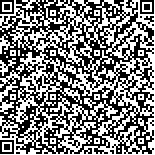| 引用本文: | 苏怡,任启智,刘玉文,白晶,苑洪菲.2009~2012年黑龙江省细菌性腹泻症候群病原菌检测结果分析[J].生物信息学,2019,17(2):116-121. |
| SU Yi,REN Qizhi,LIU Yuwen,BAI Jing,YUAN Hongfei.Analysis of pathogen detection results of bacterial diarrhea syndrome in Heilongjiang Province from 2009 to 2012[J].Chinese Journal of Bioinformatics,2019,17(2):116-121. |
|
| |
|
|
| 本文已被:浏览 1782次 下载 926次 |

码上扫一扫! |
|
|
| 2009~2012年黑龙江省细菌性腹泻症候群病原菌检测结果分析 |
|
苏怡1,任启智2,刘玉文1,白晶1,苑洪菲3
|
|
(1.黑龙江省疾病预防控制中心,哈尔滨 150030;2. 哈尔滨市南岗区疾病预防控制中心,哈尔滨 150008; 3.武警黑龙江省总队医院 妇产科,哈尔滨 150076)
|
|
| 摘要: |
| 为了解黑龙江省细菌性腹泻病原谱构成,探讨主要病原体的变异和流行变迁规律,提高监测实验室腹泻病原实验室诊断、监测预警、突发细菌性腹泻疫情的处置能力,并为进一步防治工作提供科学依据。收集哨点医院肠道门诊的细菌感染性腹泻患者粪便,采用分离培养、生化鉴定和血清分型的方法,检测沙门氏菌、志贺氏菌、致泻大肠杆菌等肠道致病菌。检测细菌性腹泻症候群患者标本537份,检出率为36.69%,其中,主要致病菌为致泻性大肠杆菌、志贺氏菌、副溶血弧菌、沙门氏菌、类志贺邻单胞菌、嗜水气单胞菌、小肠结肠炎耶尔森菌、霍乱弧菌、空肠弯曲菌、大肠埃希氏菌、检出率分别为9.31%、6.89%、1.30%、3.35%、0.56%、0.19%、0.37%、0.74%、5.40%、16.95%;性别差异不显著,各年龄组病原菌检出率和各月病原菌检出率差异显著,病原菌检出率存在季节性差异,其中6、7、8、9月份病原菌检出率高,检出率之和占总检出率的93.40%,0~10岁年龄组患病人数和检出率均高于其他年龄组。 分析发现:黑龙江省夏秋两季是细菌感染性腹泻高发季节,主要致病菌为大肠杆菌埃希氏菌、志贺氏菌、沙门氏菌、空肠弯曲菌。 |
| 关键词: 腹泻症候群 病原菌构成 流行特征 |
| DOI:10.12113/j.issn.1672-5565.201903001 |
| 分类号:R378 |
| 文献标识码:A |
| 基金项目: |
|
| Analysis of pathogen detection results of bacterial diarrhea syndrome in Heilongjiang Province from 2009 to 2012 |
|
SU Yi1,REN Qizhi2, LIU Yuwen1,BAI Jing1,YUAN Hongfei3
|
|
(1.Heilongjiang Provincial Center for Disease Control and Prevention, Harbin 150030,China; 2. Harbin Nangang District Disease Prevention and Control Center, Harbin 150008,China; 3. Obstetrics and Gynecology of Armed Heilongjiang Police General Hospital, Harbin 150076,China)
|
| Abstract: |
| This paper aims to investigate the composition of bacterial diarrhea pathogen spectrum in Heilongjiang Province, explore the variation and epidemic change rules of major pathogens, improve the ability of the laboratory to diagnose, monitor and warn the pathogen of diarrhea, and deal with the outbreak of bacterial diarrhea so as to provide scientific basis for further prevention and control. The sentinel hospital patients with intestinal bacteria in outpatient infective diarrhea feces were collected. Separated culture, biochemical identification, and serotyping method were used to detect Salmonella, Shigella, Escherichia coli (E. coli),and other intestinal pathogenic bacteria. Among the test specimens of 537 patients with bacterial diarrhea syndrome, the detection rate was 36.69%. The major pathological bacteria were pathogenic E. coli, Shigella, Vibrioparahaemolyticus, Salmonella, Plesiomus shigelloides, Aeromonas hydrophila, Yersinia enterocolittca, Vibrio cholerae, Campylobacter jejuni,and pathogenic E. coli.The corresponding detection rates were 9.31%, 6.89%, 1.30%, 3.35%, 0.56%, 0.19%, 0.37%, 0.74%, 5.40%, and 16.95%, respectively. There was no significant gender difference, while the age pathogen detection rate and month pathogen detection rate were significantly different among all age groups. Pathogen detection rate had seasonal differences that the detection rates in June, July, August, and September were high, and the detection rate accounted for 93.40% of the total detection rate. The sum of 0~10 years old age group number of cases and the detection rate were higher than other age groups. It was found that the summer and autumn seasons in Heilongjiang Province are the seasons with high incidence of bacterial infectious diarrhea, and the main pathogens were E. coli, Shigella, Salmonella, and Campylobacter jejuni. |
| Key words: Diarrhea syndrome Pathogenic composition Epidemiological feature |
|
|
|
|






